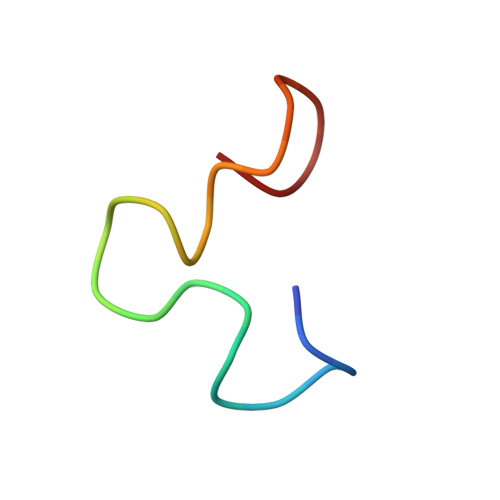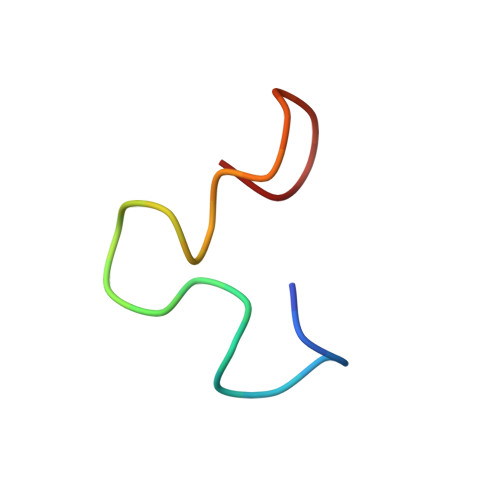The Octapeptide Repeats in Mammalian Prion Protein Constitute a Ph-Dependent Folding and Aggregation Site
Zahn, R.(2003) J Mol Biology 334: 477
- PubMed: 14623188
- DOI: https://doi.org/10.1016/j.jmb.2003.09.048
- Primary Citation of Related Structures:
1OEH, 1OEI - PubMed Abstract:
Structural studies of mammalian prion protein at pH values between 4.5 and 5.5 established that the N-terminal 100 residue domain is flexibly disordered. Here, we show that at pH values between 6.5 and 7.8, i.e. the pH at the cell membrane, the octapeptide repeats in recombinant human prion protein hPrP(23-230) encompassing the highly conserved amino acid sequence PHGGGWGQ are structured. The nuclear magnetic resonance solution structure of the octapeptide repeats at pH 6.2 reveals a new structural motif that causes a reversible pH-dependent PrP oligomerization. Within the aggregation motif the segments HGGGW and GWGQ adopt a loop conformation and a beta-turn-like structure, respectively. Comparison with the crystal structure of HGGGW-Cu(2+) indicates that the binding of copper ions induces a conformational transition that presumably modulates PrP aggregation. The knowledge that the cellular prion protein is immobilized on the cell surface along with our results suggests a functional role of aggregation in endocytosis or homophilic cell adhesion.
Organizational Affiliation:
Institut für Molekularbiologie und Biophysik, Eidgenössische Technische Hochschule Zürich, CH-8093, Zürich, Switzerland. rz@mol.biol.ethz.ch
















